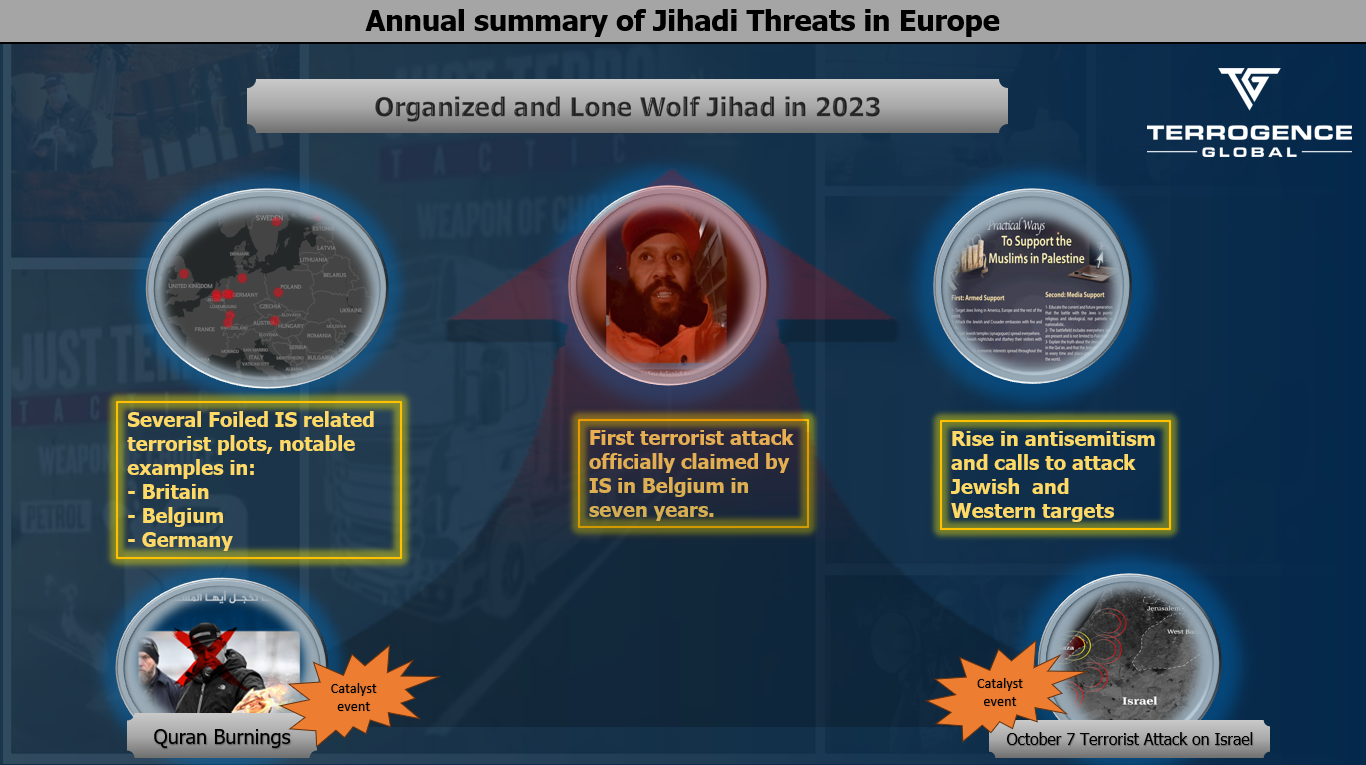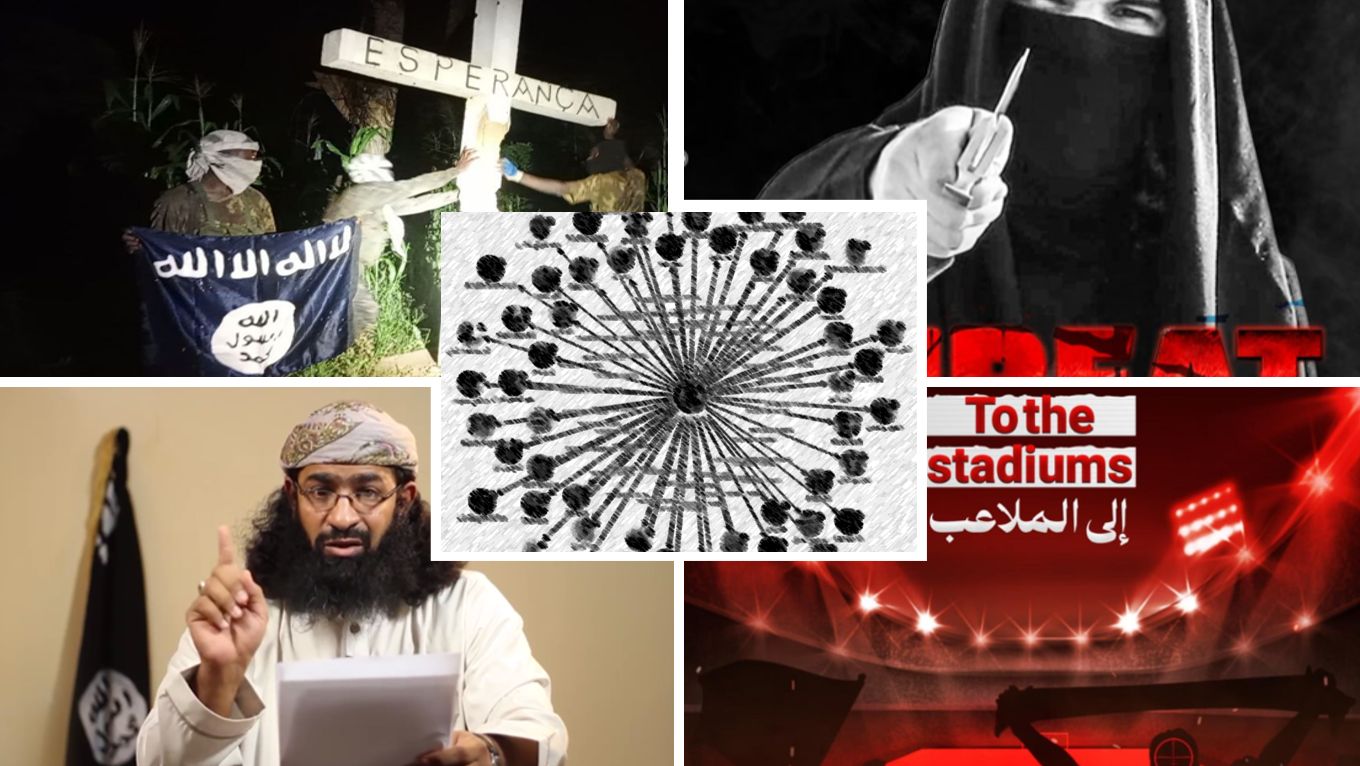Overall in 2023, attacks claimed by global jihadi terrorist groups continued to decrease. Both Al-Qaeda (AQ) and the Islamic State (IS) continued to suffer from leadership crisis. Since Ayman al-Zawahiri’s elimination in 2022, AQ has yet to confirm his death or announce his successor. Additionally, this year IS lost another leader and several high-ranking individuals. The groups continue to focus on high-quality suicide bombings and insurgency with varying intensities. In Africa, these groups can employ mass-raid tactics due to their large number of combatants. Some evidence suggests that IS often refrains from claiming a significant number of its attacks in several arenas as a part of an ambiguity strategy.
The most prominent theater of Global Jihadi operations is the Sahel, where activity by IS Sahel and Jama’at Nusrat al-Islam wal-Muslimin (JNIM) claimed the lives of many civilian and security personnel. The increased involvement of Russian private military companies and the withdrawal of French and international military forces from the Sahelian countries, after they underwent a series of military coups in 2023, contributed to the escalation of the security situation in the area. Al-Shabaab continues to be very active and capable in Somalia, amid the government’s struggle to battle the group.
Global Jihadi attacks in other arenas decreased significantly. In Afghanistan, the Taliban conducted operations against the Islamic State Khorasan Province (ISKP) with intermittent success and thus made ISKP change its tactics to implement rare high-value attacks instead of constant insurgency. These attacks are implemented on the regional level, beyond the borders of Afghanistan. A major indicator of this year’s decrease in attacks is the cessation of IS attacks in the Sinai Peninsula, where only one attack was claimed in the entire year.
Overall, counterterrorism efforts in Europe and North America foiled a significant number of jihadi plots, some of which were organized and coordinated by IS, while others were lone wolf plots inspired by global jihadi propaganda. This emphasizes the continued threat of online propaganda and radicalization. Nevertheless, some lone wolf attacks were successful, and for the first time in seven years, IS has claimed a lone wolf attack in Belgium.
Local jihadi insurgent groups pose a significant threat, with several theaters experiencing a surge in jihadi activity. The most prominent example is the rising number of attacks by the Tehreek-e-Taliban Pakistan (TTP) and its affiliated factions in Pakistan. While some observers have warned that such activity could enable AQ to regain strength and organization, there is currently no concrete evidence suggesting cooperation or coordination between the groups.
The October 7 terrorist attack on southern Israel and the subsequent war between Israel and Hamas, although a local conflict, sparked an outrage in Muslim communities around the world, thus posing a major security threat in the West. The Palestinian terrorist groups spearheaded by Hamas may serve as inspiration for general violence against the West, especially against Jewish targets. Furthermore, the war between Israel and Hamas is exploited by the propaganda apparatus of both IS and AQ to promote terrorist attacks in the West. Thus, the war serves as a catalyst for terrorist plots and attacks outside of the conflict zone itself, especially among jihadists who identify themselves with general jihadi ideas and ideological components, rather than a particular group.
Iranian proxy group attacks on Western interests and Iranian-sponsored terrorism have also spiked since October 2023. US bases in Syria and Iraq were attacked more than a hundred times and the Houthi militia in Yemen launched missiles and UAVs deployed as loitering munitions against targets in the Red Sea, disrupting the global supply chain. The consolidation and bolstering of these militia’s weapon capabilities are expected to continue to undermine the security of Western interests in the Middle East and the maritime security of transit passages.
Evidence from the conflicts in Ukraine and Sudan has not shown any major signs of IS and AQ organizational or operational moves in these arenas. Nevertheless, the Ukrainian conflict has the potential to catalyze the proliferation of various asymmetric warfare tactics, techniques and procedures (TTPs,) with weaponized UAVs improvised from commercially available materials emerging as one of the most prominent developments.
Get the full report
If you would like to get the full report, leave your details in the form below.
Please be advised we can only send reports to validated government organizations.





